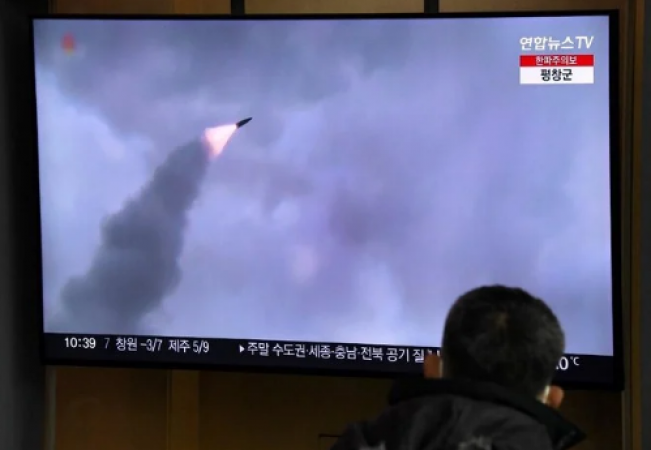
Seoul: On Saturday, North Korea fired a long-range ballistic missile into the ocean off the west coast of Japan after threatening to respond harshly to upcoming US-South Korean military exercises.
The fact that it landed more than an hour after it was launched in waters inside Japan's exclusive economic zone, according to Japanese authorities, suggests that the weapon was one of the North's biggest missiles. No immediate reports of damage to ships or aircraft were made, according to Tokyo.
South Korea and the US are preparing for annual military drills as part of efforts to counter the North's growing nuclear and missile threats, and Pyongyang on Friday threatened a "unprecedentedly persistent, strong" response. This is the North's first missile launch since Jan. 1.
Also Read: 'Ex-Army Chief wanted to settle terrorists in Pakistan', this leader's big statement
Nuclear-armed Last year, North Korea resumed preparations for its first nuclear test since 2017, while also launching an unprecedented number of missiles, including ICBMs that could strike anywhere in the US.
According to South Korea's military, the long-range missile fired on Saturday was launched from the Sunan region close to Pyongyang. The Pyongyang International Airport is located in Sunan, and this is where North Korea has carried out the majority of its most recent ICBM tests.
Fumio Kishida, the prime minister of Japan, stated during a briefing that his country had lodged a strong protest and strongly condemned the launch, calling it a threat to the global community.
Also Read: Jimmy Carter: former US president, is receiving "hospice care" at home
Despite being prohibited by United Nations Security Council resolutions, North Korea maintains that its development of weapons is required to counter "hostile policies" by the United States and its allies.
Senior defence policymakers from both sides will participate in Allied nuclear drills, known as the Deterrence Strategy Committee Tabletop Exercise, which are scheduled for Wednesday at the Pentagon, according to Seoul's defence ministry.
In the upcoming weeks and months, the two nations also have a number of expanded field exercises planned, including live fire drills.
As a result of the 1950–1953 Korean War, which ended in an armistice rather than a formal peace treaty and left the parties technically at war, approximately 28,500 US troops are stationed in South Korea.
According to recent military restructuring, Pyongyang may have established a military unit tasked with operating new ICBMs, according to state media video footage of a parade on February 9.
More ICBMs than ever were on display during that parade, including a potential new solid-fuel weapon that could speed up the North's missile deployment in the event of a conflict.
Also Read: An argument involving Israel breaks out at the African Union summit
Leif-Eric Easley, a professor of international studies at Ewha University in Seoul, said: "North Korean missile firings are frequently tests of technologies under development. It will be notable if Pyongyang claims progress with a long-range solid-fuel missile."
The Kim administration might also portray this launch as a retaliation for US defence cooperation with South Korea and sanctions diplomacy at the UN.